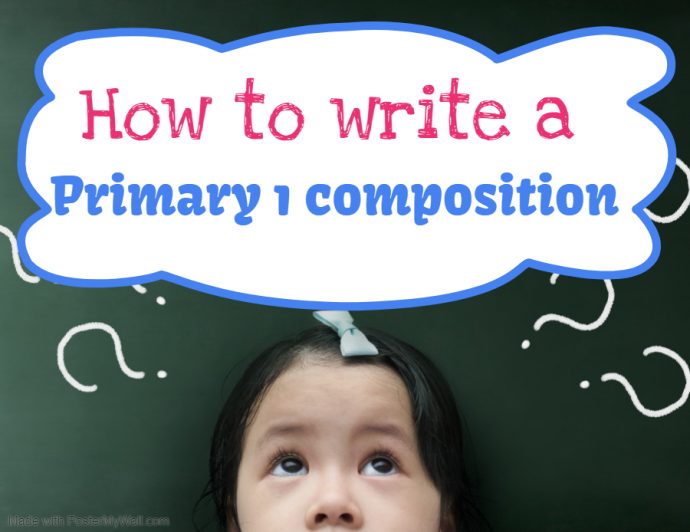
Introduction to picture composition writing for Primary 1
For picture composition for Primary 1, there are 4 connected pictures which come together to form a complete incident.
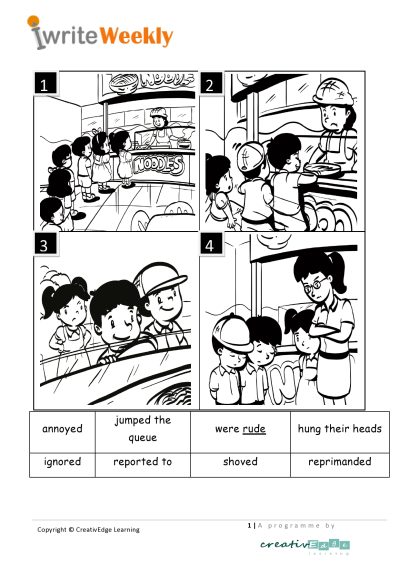
With the 4-pictures format, pupils are to write a complete story by sequentially detailing the incident as shown in the 4 pictures.
How to plan and write a composition
The first step is to know the story structure – what are the important story elements that each composition must include.
With Primary 1 pupils, the SPACE planning strategy is a simple yet effective planning tool for pupils to understand the planning of story structure.
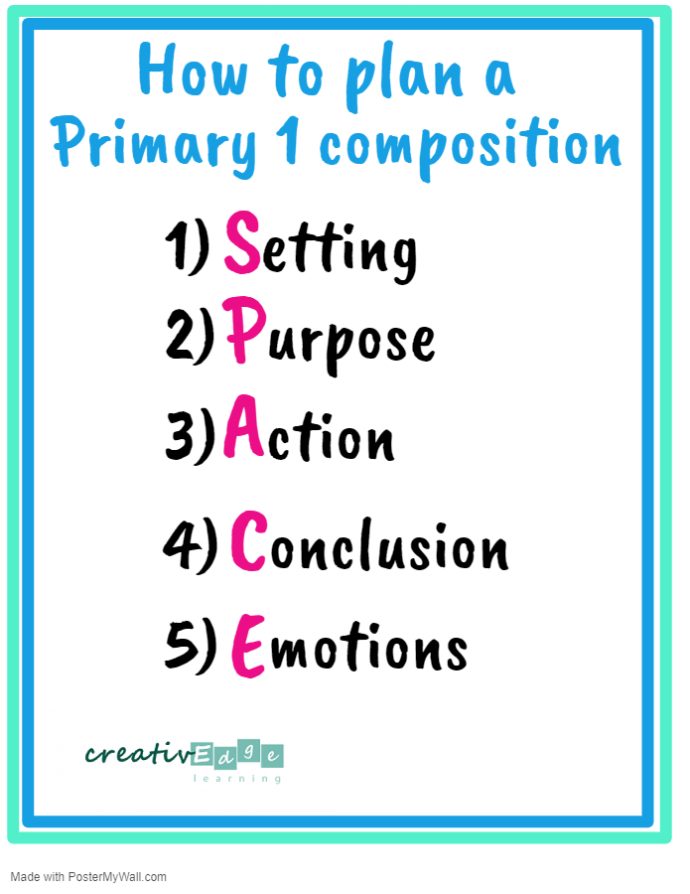
1) S for Setting
Using the ‘W’s , the setting tells the reader the the time (When), place (Where) and main character (Who) of the story.
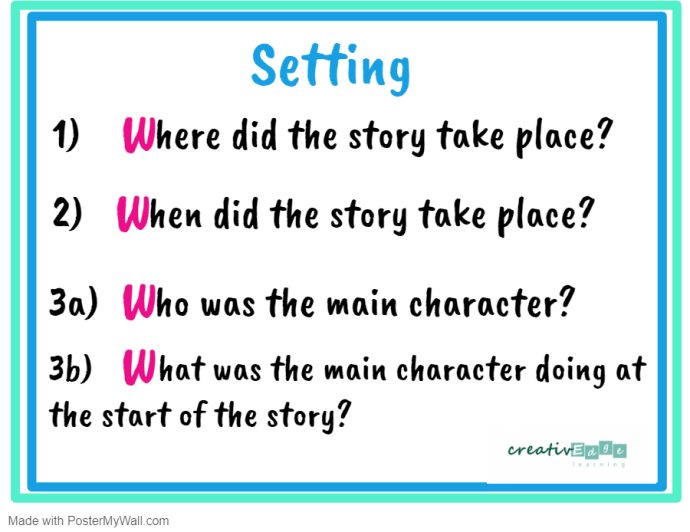
To identify the setting elements, we generally look at Picture 1 of the given topic.
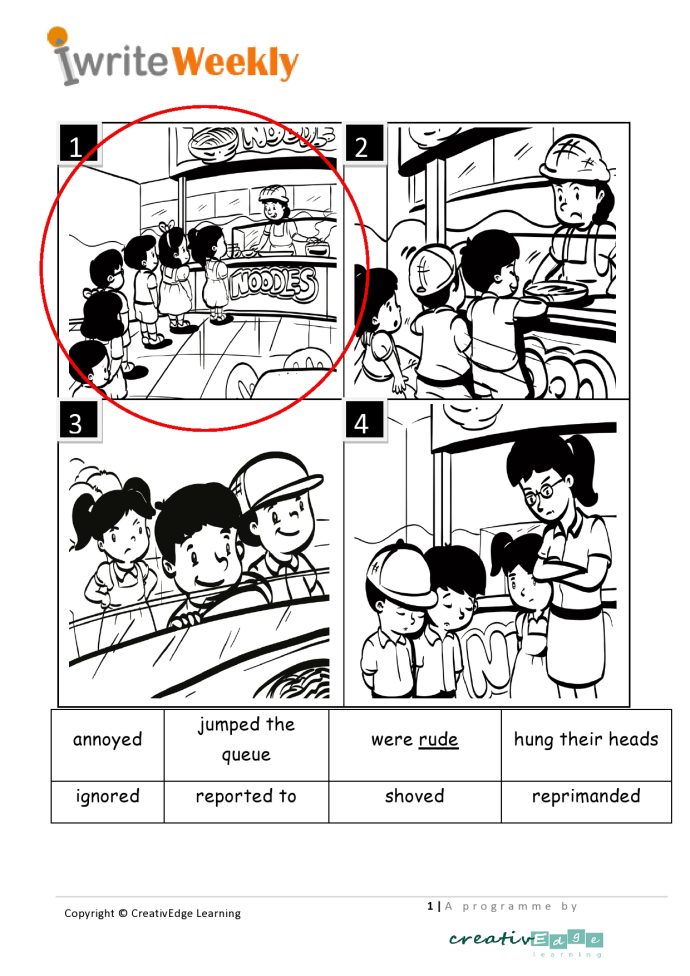
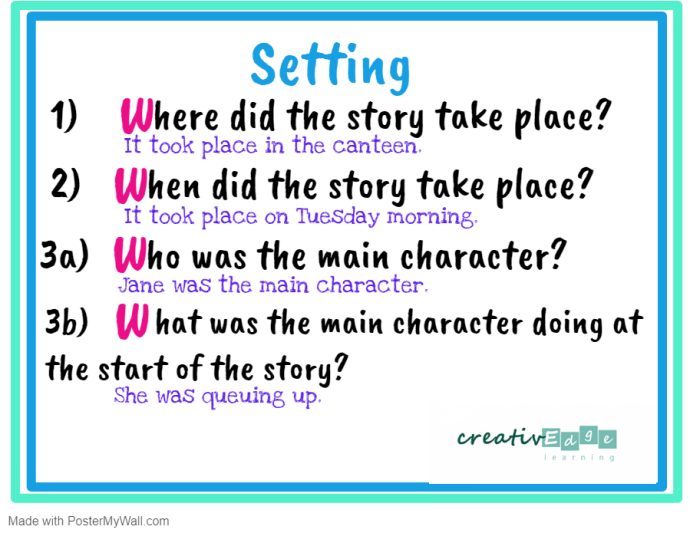
For Question 1, the answer for the place is definitely according to Picture 1.
There is more than one right answer for the day and time in Question 2. In this case, it can be any day from Monday to Friday during school hours.
To answer Question 3a, pupils must select the main character who should play a major role in the story. They must give the main character a sensible name.
For Question 3b, the main character’s action should be written according to what the main character was doing in Picture 1.
Now, we can use the answers to start the composition.
How to write the composition – Introduction Paragraph
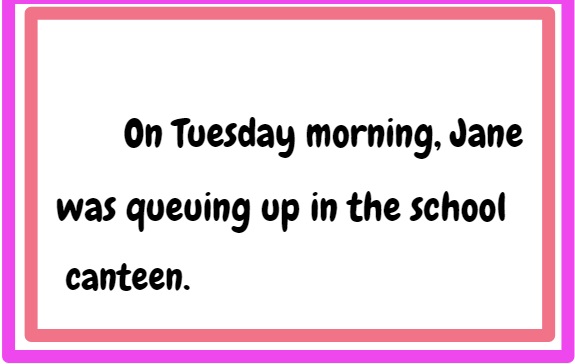
2) P for Purpose
Next, we will identify the purpose of the story. Pupils can look at Picture 2 for the purpose.
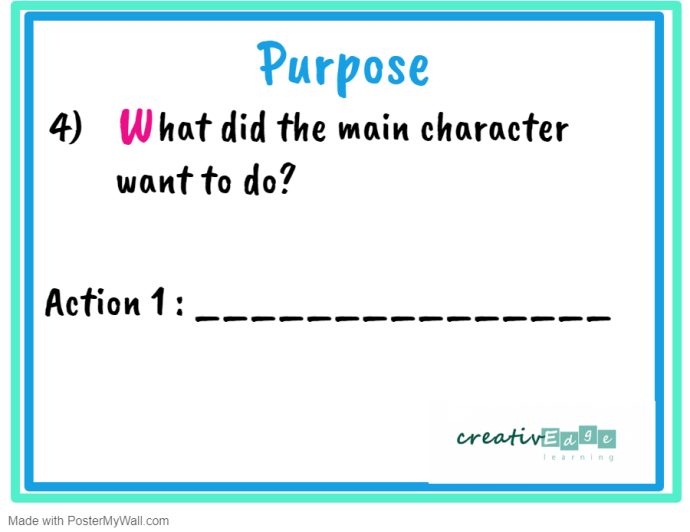
It is important that pupils understand that composition writing goes beyond picture description.
This is the part that pupils need to tap on their imagination and see beyond the pictures to form a story.
In this case, think of a possible reason that the main character was queuing up.

3) A for Action
A purpose leads to an action.
This means that when the main character wanted to do something, it will lead to an action happening,
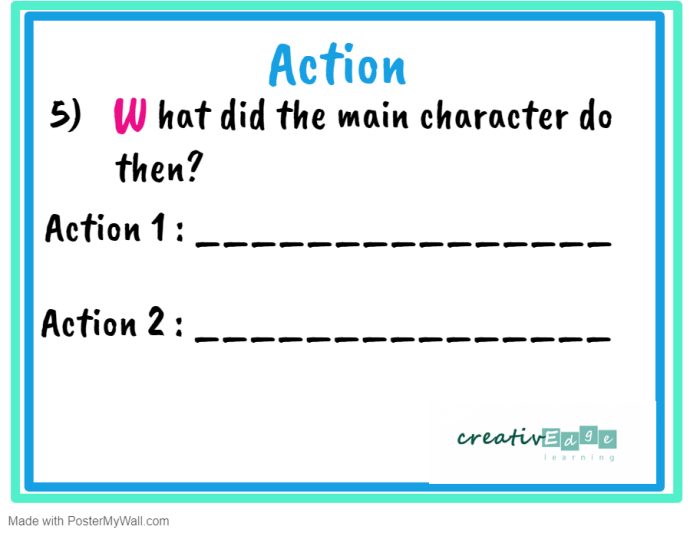
In this case, Picture 3 shows the action.
The main character was going to place her order when it was her turn. However, two boys shoved her aside.
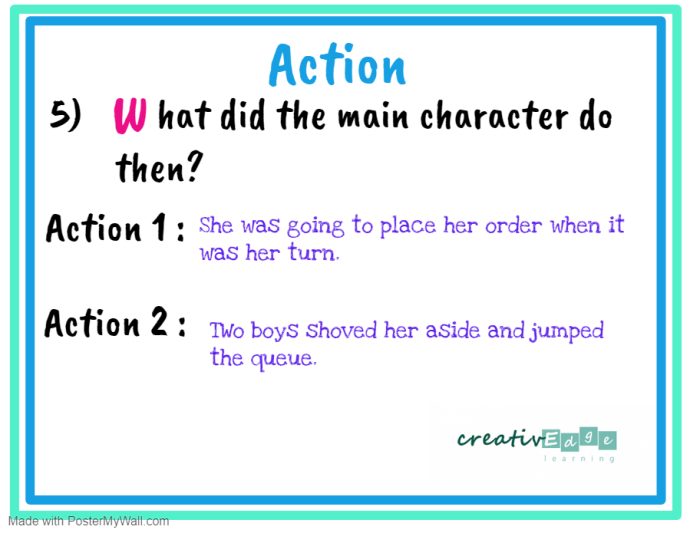
How to write the composition (Introduction + Body Paragraphs)
The answers for the Purpose and Action can then be added on to continue forming the composition

4) C for Conclusion
A complete story requires a conclusion which tells the reader what happened at the end of the story as well as the lesson learnt.
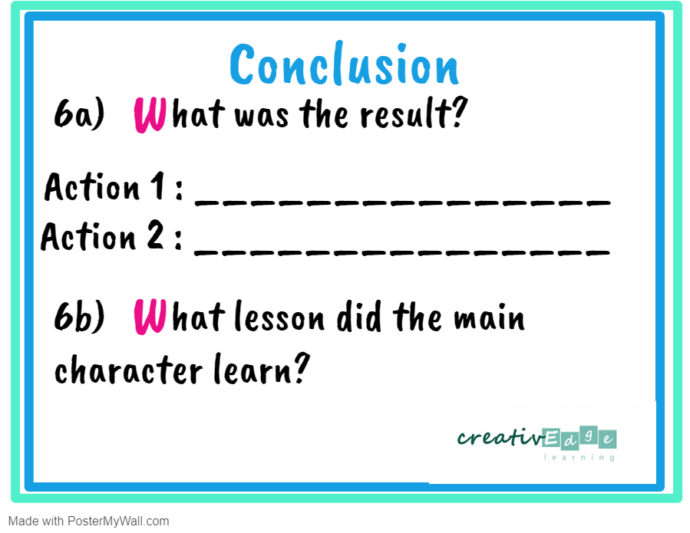
For the conclusion, pupils should see beyond the pictures and think about what the main character did that led to Picture 4.
In this case, she should have informed a teacher who then scolded the boys.
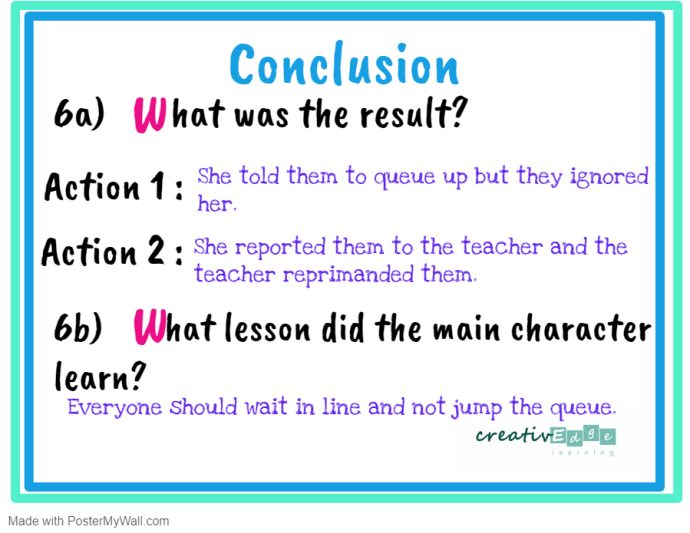
How to write the composition (Introduction + Body + Conclusion Paragraphs)
We can add the conclusion to form the last part of the story.
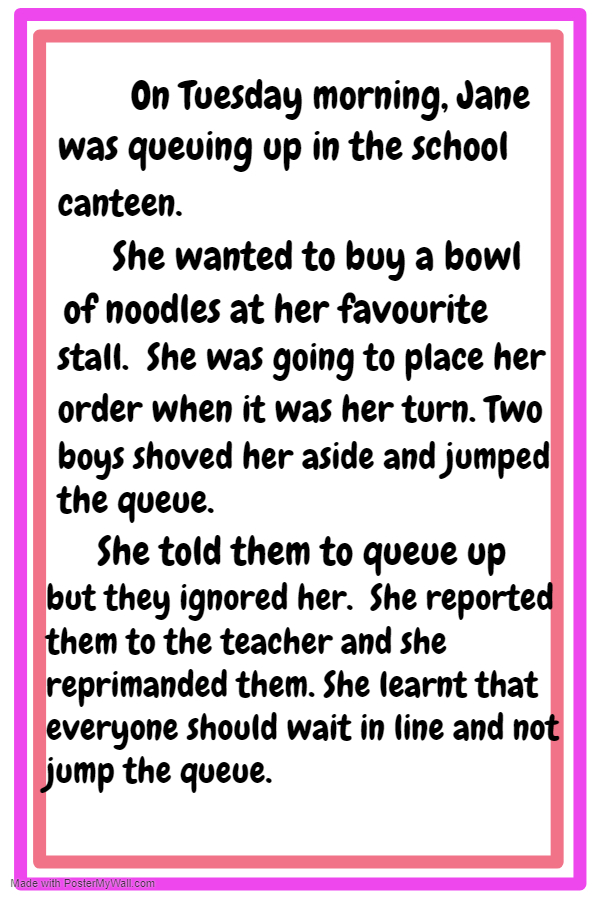
5) E for Emotions
Now that the entire story is complete. The emotions (feelings) of the main character can be inserted to complete the story.
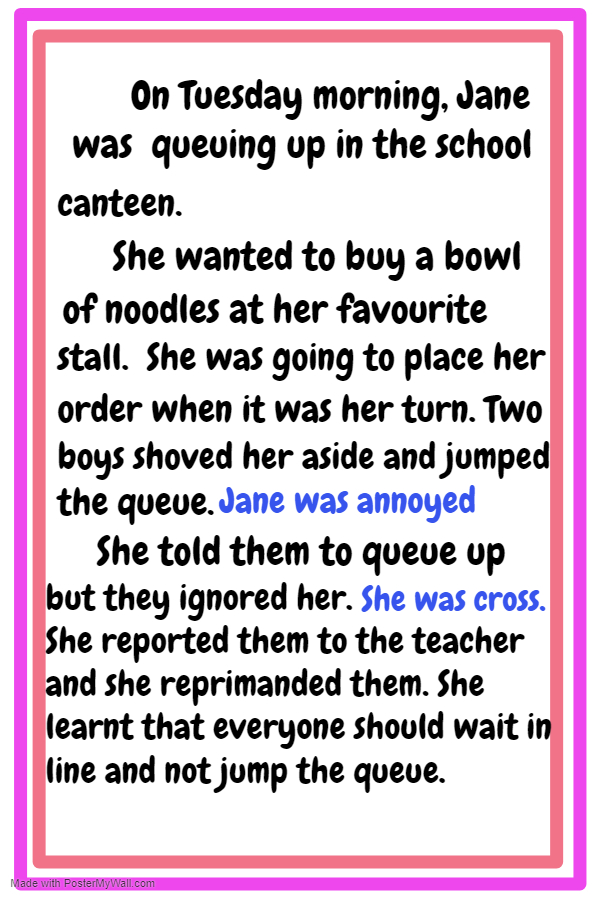
As highlighted in our earlier post, do focus on specific adjectives to build the vocabulary word bank.
With SPACE Planning, Primary 1 pupils can learn connect the 4 pictures, see a story using the 4 pictures and to write a story using a proper story structure.
Our Primary 1 English enrichment classes teach pupils the essential writing skills , sentence structures and descriptive vocabulary, setting pupils on the path of being confident writers. Call us today to find out more.




Effective teaching
Thanks very much for the helping me.
This really helped me alot.
But l was expecting a grade six one.
But its ok because this also helped me.
This was very helpful
This was very helpful. Can I get some more samples like this?
Thanks a lot. This helped in giving me a clue.
hi..i am so grateful for your help. it help me a lot
Very helpful
Thank you.That was very informative.
It really minimise my problem how I teach my daughter